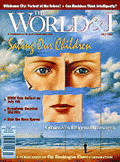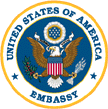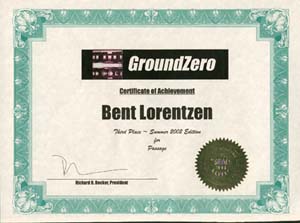FOR A BRIEF GLIMPSE, CLICK ON THESE...






 ORIGINAL 1
ORIGINAL 2
ORIGINAL 1
ORIGINAL 2

USA today article on sexual addiction
©2004, Voices for Change & Bent Lorentzen: Boston Mental Health publication article titled: Welfare: The Solution
To The World's Economic Woes. Click: for Page 25, Click: for Page 27 Unfortunately, an error in this article's editing
caused one statistic to be incorrect. Please understand that though this article criticizes some of the current policies of Denmark and the USA, I value and respect the principles that
both governments and their leaders embody. And I offer solutions.
Above images, in order of
appearance: ©1994-2004 DANE, ©1999 Bent Lorentzen
& Open Road Ltd, ©1997 Bent Lorentzen & VIKING MAGAZINE, ©1992 A.R.
Nørgaard & RECOVERY MAGAZINE, ©1998 Bent Lorentzen & ALTAIR MAGAZINE, THE WORLD & I Magazine cover article on Denmark's celebration of
US Independence Day ©1995, 2002, ©2003 (Spring Issue) PanGaia Magazine - article on ancient origins of mathematics, ©1995-2002 United States Information Service and US Embassy in Israel
(and) ©1994 Baltimore Sun and Bent Lorentzen: Originally a Baltimore Sun feature article with
many photos by Bent Lorentzen of a unique perspective to US Independence Day

Click
on above image to see Copenhagen newspaper article on 2002 award for the short
story on a Native American’s response to 9-11.
CLICK
HERE FOR ENGLISH TRANSLATION: ENGLISH
CLICK
HERE TO READ THE STORY: Passage
Mission
Photojournalism and authorship to make the world a better place. We
are the forum / interchange / marketplace for the works of Danish authors Bent Lorentzen
(anthropologist, journalist and mental health
counselor) and A.R. Nørgaard (educator), and others
allied with the Danish sense of peace, compassion and prosperity.
Aside from cultural photojournalism, we also offer modern fairy tales, fantasy, and science fiction (print and data formats) based on research in cultural anthropology, with emphasis on keeping alive
these cultures' richness without displacing that of others.
Our philosophy includes offering a safe space for those who wish to share their views
of life as death approaches and
for the writings of those who have survived ethnic or
other types of violence and prejudice. To avail yourself of that opportunity, kindly go to FORM
Profile
Bent
Lorentzen
was
born in Roskilde, Denmark, ancient seat of the Danish Kingdom. He lived in Montreal for seven years, studied for a BS in biology (environmental science)
-
elected VP of
LIVE - League for the Investment to a more Viable Environment), PhD in cultural anthropology,
and neurobiology/psychology
(uncompleted), and countless matriculated curricula in multidisciplinary fields. Recently, he was selected as a delegate to the Danish government's committee seeking
solutions to the vexing welfare reform issue. He has taught science and math in America and Denmark, was associate editor to a Washington DC area newspaper and book reviewer and photojournalist in both Denmark and USA.
Bent is currently writing a syndicated column and several books from his home in Copenhagen. He has also been engaged by the Danish government to teach and counsel the mentally challenged. At the Vatican's request, Mr. Lorentzen designed and wrote a book on Denmark's history and culture as a teaching tool for
foreign clergy sent to Denmark. His favourite pastime is sharing meditation and
yoga skills, and serving the homeless at a soup kitchen or where they seek shelter from unkindness in the forests surrounding Copenhagen. photography (beginning in 1972 as an undergraduate with a
Boston area planetarium -- where he wrote and directed the highly acclaimed 1975 Moody Blues production, "Cosmic Indictment" to save the Nashua River,) and editing (Associate Editor) for a
newspaper syndicate by Washington DC and founder of the magazine, Many Leaves One Tree --
for which he was awarded BEN & JERRY´S ICE CREAM FOUNDATION social consciousness
award in 1995.)
Additionally, much of Mr. Lorentzen's cultural journalism takes place
through his unique ability to view and report elements of society from atop a
bicycle. He has raced in Denmark and in America as a captain of a USCF
cycling team, and has authored a three-year syndicated column on bicycling
culture.
He is available for speaking and promotional engagements
worldwide. In 1999 completed a 2500 kilometer unsupported bicycle ride along the
mountains of eastern USA, in the dead of winter, for a book on American
culture and on behalf of the mental health advocacy groups M-POWER and the ICCD (Fountain House)
For thirty years he studied kundalini yoga and meditation on an ashram, as well
as researching more "Western" relaxation techniques from the Menninger Foundation. He has studied Tibetan Buddhist healing, Reiki, Tae Kwon Do, climbed many mountains over 14,000 feet, and been taught by
Navajo and Mayan Shamans as well as monks at a contemplative Catholic monastery near Montreal.
The Ancient Art of Fairy Tales
from Bent Lorentzen's book "A Little Bird Told Me" (c) 2006, Copenhagen
In 1913, Carl Gustav Jung, a good friend and colleague of the father of modern psychotherapy, Sigmund Freud, woke up from a nightmare. He dreamed that a violent ocean of blood that would destroy civilization was about to flood across Europe to his Swiss Alps mountain home. Carl Jung was at the time researching many of the worlds religions, mythologies, fairy tales and people's dreaming to better understand what the human unconscious was all about. Well, Jung's nightmare became a reality the year after, when the worst war in human history until then (WWI 1914-1918) turned Europe into a bloodbath. His friend, Freud, theorized that the unconscious was a very dark, unhealthy place in the mind filled with childhood's conflicts and hurts, which then made them not understand why they behaved in unhealthy ways later on as adults.
Jung, however, believed that people could access through their minds an unending history connected to the soul, which he called the "collective unconscious." Although he personally believed in an unending soul, his scientific theories about the unconscious actually describe a place where the egos of all humans are connected. It is a deep and unseen region that has its roots in very ancient "shared patterns" that constantly find new ways of expressing themselves. He called these patterns, ”archetypes.”
To some people who study Jung, his description of this formless universe filled with countless archetypes – the content of the collective unconscious – might seem rather complicated. It really isn't. Jung often called ”archetypes” *mythological or primordial images*. By itself, an archetype has no form. It is nothing other than a force, like a magnetic field that can't be seen, which when you put iron filings near it, manifest the image of that particular magnet's field of influence. And there are as many types of ”fields of influence” - archetypes - as there are patterns of behavior. According to Jung and most who research this science, these archetypes were carved into our unconscious through our whole history of evolution, from the beginning of time until now. Therefore, some of these archetypes are very primitive and carnal (only of the body and its senses)... and others are profoundly divine or God-like.
The trick to finding our way out of being trapped by these archetypes' repetitive behavioral patterns is called “integration.” If one denies a particular aspect of one's nature (which often might be judged negative or profane) then that actually only strengthens that pattern's power over you as much as to engage in that ”negative behavior.” Our more primitive demands reside in a region of the unconscious Jung called the ”shadow lands.” Freud would consider these repeating, often unspiritual or animal-like behavioral patterns, biological instincts. Jung didn't agree. He actually considered them all ”spiritual” in nature. The more base patterns evolved at a time of our evolution when we were not self-conscious and needed to survive and reproduce ourselves within a very harsh, deadly and incredibly competitive environment – a place the Bible calls “paradise lost” or “original sin.” Often, in many fairy tales and movies filled with thrilling and well-defined archetypes, like Star Wars and Tolkien's Lord of the Rings, this shadow region is the ”dark side” or "dark force" and the evil we can do or think about, is stockpiled there. We have many symbols for the archetypes in this region, often including monsters, demons, the snake of Eden, dragons, etc. Jung described how in many of the world's ancient folk tales and also in people's dreaming, these scary creatures guard a pool of water or some cave, both of which symbolize the whole of the collective unconscious... in other words, the demons are trying to stop you from becoming aware of who you really are. Another way to understand this is to see that the battle between ”good and evil” in all the great stories and in all those dreams, perhaps even in the holy scriptures, is simply a battle with your own self.
Once one has made peace with his more primitive, dark-side impulses, the next challenge is to realize that in each of us exists both the whole of the female archetypes (anima – an ideal often represented as Mother Earth) and the male archetypes (animus – an ideal often represented by a wizard). That's the simple view of that one. There are actually many thick psychology books that describe just that region. The journey of the male person is to discover his anima (female aspect), which is how his collective unconscious can be revealed. Correspondingly, the woman's path to self-discovery and integration leads to her animus (masculine aspect).
The self is the ultimate archetype. We never really get to know our true self until we have become aware and made peace with all the affairs of our unconscious. The path through that can be exciting when we seize upon life as a fairy tale filled with endless and limitless potential. If we go back to the example of magnetic fields as archetypes, then imagine the collective unconscious, and especially its shadow lands, as an infinitely huge blanket with endless magnets under them, each of whose field of influence produces opposite mythological creatures with the iron dust that's placed on the blanket. Whatever you think you are, including the facades you present to others, is like a flashlight that only lights up a tiny bit of that blanket. You only see some few familiar patterns on the blanket. The rest is in darkness. That darkness prevents you from seeing that a “conflict” always has its opposite. Your ego keeps moving the flashlight around in life, looking for a better “you.” The idea of integration has nothing to do with moving the light away from something you don't like, but with widening that beam of light to bring more light to this blanket. Fairy tales and such have such an impact on us because its various characters are so well defined and without facades, that it's like having many small spot beams clearly lighting up different important bits of that blanket, and so we see a hint of our limitless potential.
In this little bit of writing, I won't go into too much more about archetypes, because there are many levels to the whole trick of becoming integrated – of bringing step-by-step acceptance, awareness or consciousness to the entire structure of our unconscious. It gets very interesting when one strives to make peace with his primitive drives, understanding why one keeps behaving in certain ways when certain problems arise, until one becomes a more balanced human being who is not always reacting to the events of life, especially with fear. Jung felt that a person could not attain the ultimate integration of all the archetypes, of becoming God-like, until one died. He did remark in some of his writings, that historical individuals such as Jesus Christ or the Buddha had accomplished this ultimate integration while still alive.
Jung also studied embryology, which scientifically investigates the human fetus growing in a mother's womb. It is quite fascinating to learn how the human fetus goes through every stage of human evolution – more than three billion years – in just nine months. In other words, from being a sort of bacteria to a worm to a lizard to an ape with a tail to a human child. Jung also learned through his study of the mythologies, ancient stories and holy texts of cultures that have never talked to each other because they are isolated geographically or by time, that their ideas of creation and a "final end" all tell about the same story and include pretty much the same wisdom about how to successfully survive and behave in ways that lead to individual and collective happiness. Some of these stories are more focused on the battles between the forces of light and darkness, and of course, the quest for one's prince/king (animus) or princess/queen (anima) to bring peace to the whole kingdom (integration within the shadowland). Many are very inspiring, where the struggle to self-understanding leads to heavenly realms and paradises where there is no longer a struggle and only love.
The symbolic language of the soul, of the human collective unconscious, is a very simple one. Art, song, poetry, ancient holy texts and yes, even fairy tales act like a symbolic language of the soul because the wisdom and traps of the collective unconscious don't exist in the ego but deeper beneath. It is the ego that can manifest these patterns... all the way to absolute integration. Thus, these stories don't actually “talk “ directly to the ego, which is trapped in a pattern, but they evoke very deep feelings that point to the spirit, or the path of integrating archetypes that are in conflict. In other words, these stories describe how to “back out” of the conflicts you might be caught up in.
Jung, like Freud, felt that the goal of therapy, indeed of life, was to make conscious whatever lies shadowy in the unconscious, and thus wake up more and more of who you are. In other words, to bring about more understanding in yourself, as to why you behave and think the way you do, and why the world behaves the way it does. In the days before books, TVs and computers, our grandparents or the wiser people in a village, would tell endless stories of old to children and adults alike, which they had been told by their grandparents and so forth. This is the oral tradition of storytelling. These old stories were passed down from generation to generation to help teach very old wisdom to the people in the village. Many old societies did not even have a western-type written language until the last few hundred years, so these stories were held in the memory of the storytellers, often in huge poems, often being helped along by symbols in art, beads and weaving. The core of the story never changed as they were passed from generation to generation. What changed mostly was the characters and such, to make the stories relevant to problems and issues concerning the current generation. Many of these storytellers acted also as a sort of priest for the village, because the stories often also dealt with the soul's passage into death or through tragedies and illness. Some stories are a way to warn children against the dangers in life. Some just try to make sense of natural forces that can't be controlled.
Some stories come from the deepest part of the creative imagination. And it is here that Jung was most fascinated. Because oddly, a person, if he or she is willing to be very simple and allow the deepest part of the soul to write a story.... or feel such a story... life suddenly becomes very thrilling. It is as though we become a part of the story. Such a story is like a personal map or a guide that helps tell you how to become a more integrated, whole and aware person. It empowers you to be all that you can be. It offers hope even when everything seems so dark, painful, divided, undefined and lost. It teaches that you always always have a way out of any mess... even when the darkest fear of all approaches, death.
Lorentzen, also as a Jungian therapist, is now on a book-signing/lecture tour in Scandinavia. Next
lecture is at the Atheneum Boghandel at Copenhagen University, Nørregade 6, KBH, on Dec. 8, 2006. (Please email contact-info below for direct telephone or Skype)
 2147
2147